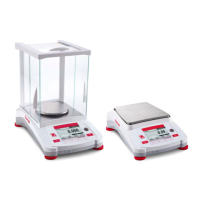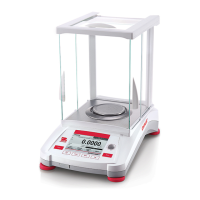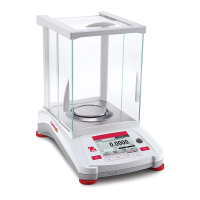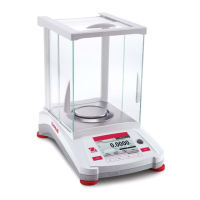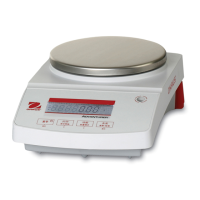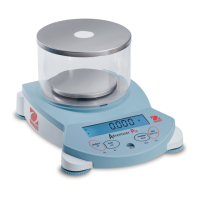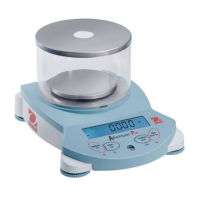What to do if my OHAUS Scales will not turn on?
- JJoseph StoneAug 13, 2025
If your OHAUS Scales are not turning on, the issue is likely a power problem. Verify the power connection and voltage to ensure the scales are receiving power.
What to do if my OHAUS Scales will not turn on?
If your OHAUS Scales are not turning on, the issue is likely a power problem. Verify the power connection and voltage to ensure the scales are receiving power.
Why can't I calibrate my OHAUS Scales?
Several factors can prevent calibration of your OHAUS Scales. Here are a few things to check: * Ensure the Calibration Menu lock is off. * Confirm that Approved Mode is off. * Make sure the environment is stable; relocate the scales if necessary. * Verify that you are using the correct calibration masses.
What does 'Low Reference weight' mean on my OHAUS Adventurer AX423, and how to fix it?
A 'Low Reference weight' message on your OHAUS Scales means the reference weight is too small. Increase the sample size to resolve this.
What does 'Invalid Piece Weight' mean on my OHAUS Adventurer AX423, and how to resolve it?
An 'Invalid Piece Weight' message on your OHAUS Scales indicates that the average piece weight is too small. To fix this, increase the average piece weight.
Why are my OHAUS Adventurer AX423 Scales showing poor accuracy?
Poor accuracy with your OHAUS Scales can stem from a couple of causes. First, the scales may need calibration. Try performing a calibration. Second, an unstable environment can affect accuracy. Relocate the scales to a more suitable, stable location.
Why do my OHAUS Adventurer AX423 display 'Operation Timeout'?
An 'Operation Timeout' error on your OHAUS Scales indicates that the weight reading is not stable. Try moving the balance to a more suitable location to ensure stability.
Why can't I change the menu settings on my OHAUS Adventurer AX423?
If you are unable to change menu settings on your OHAUS Scales, it could be due to a locked sub-menu. Try unlocking the sub-menu. Also, ensure that Approved Mode is turned off.
What does '------' mean on OHAUS Scales?
The '------' display on OHAUS Scales indicates that the balance is busy. It may be performing a tare, zeroing, printing, or waiting for a stable weight. Wait until the process is completed.
Explains signal words and symbols used to convey safety information.
Provides critical safety warnings and precautions for using the balance.
Details how to level the balance using the built-in level bubble and feet.
Explains how to connect the balance to the power supply.
Describes how to connect the balance to a computer or printer via USB or RS232.
Outlines the importance and procedure for initial calibration.
Explains how to use the weighing application to determine item weight.
Guides on using the parts counting application for uniform items.
Explains how to measure weight as a percentage of a reference weight.
Describes weighing unstable loads with manual or automatic start/stop.
Explains how to determine an object's density using various methods.
Step-by-step guide to measure solid density in water.
Details measuring buoyant material density in water.
Explains measuring solid density with a liquid other than water.
Instructions for measuring liquid density using a sinker.
Guide to measuring porous material density using oil.
Describes how to compare sample weights against target limits.
Explains capturing and storing stable or peak weights.
Explains measuring cumulative weight of multiple items.
Describes using the application for compounding and recipe making.
Details how to use the weigh below hook for weighing items beneath the balance.
Lists the six calibration methods available for InCal models.
Details how to perform internal calibration.
Explains the self-calibration feature.
Describes how to adjust the span calibration point.
Explains span calibration using two calibration points.
Details linearity calibration using three calibration points.
| Capacity | 4200 g |
|---|---|
| Readability | 0.01 g |
| Display | LCD |
| Repeatability (std. dev.) | 0.01 g |
| Linearity | ±0.02 g |
| Stabilization Time | 1.5 s |
| Power Supply | AC Adapter |
| Weighing Units | g, oz, N |
| Communication | RS232, USB |
| Operating Temperature Range | 10 °C – 40 °C |
| Interface | USB, RS232 |

